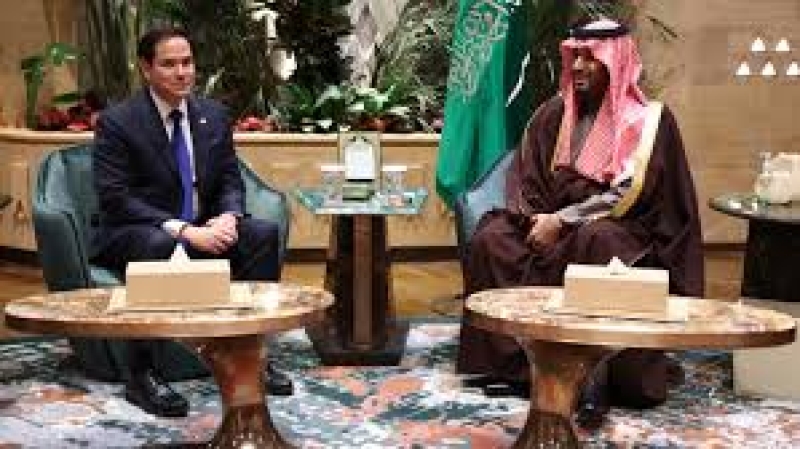- US Issues Travel Alert for Bangladesh Ahead of Election |
- Air ambulance carrying bullet-hit Hadi flies for Singapore |
- Can Dhaka’s arms recovery drive ensure peaceful polls? |
- ‘Unhealthy’ air quality recorded in Dhaka Monday morning |
- BD peacekeepers' deaths: UN chief calls Dr. Yunus, offers condolence |
Rubio in Saudi Arabia for Talks on Gaza's Future

U.S. Secretary of State Marco Rubio arrived in Saudi Arabia on Monday to discuss the potential ceasefire between Israel and Hamas, and the future of Gaza should the war come to an end. Rubio met with Saudi Crown Prince Mohammed bin Salman and Foreign Minister Faisal bin Farhan during the visit.
The discussions followed U.S. President Donald Trump’s controversial plan to relocate 2.3 million Palestinians from Gaza to neighboring countries, with the U.S. redeveloping the territory. This proposal, opposed by Saudi Arabia and many Arab nations, diverges from longstanding U.S. policy that supports a two-state solution with a Palestinian state alongside Israel.
According to U.S. State Department spokesperson Tammy Bruce, Rubio and Crown Prince Mohammed emphasized the importance of a stable solution for Gaza that contributes to regional security. They also reaffirmed their commitment to the ceasefire and ensuring the release of all hostages, including American citizens, held by Hamas.
While Saudi Arabia and other Arab states continue to advocate for the creation of an independent Palestinian state, Rubio suggested that Arab countries should offer alternative proposals for rebuilding Gaza, which has been devastated by months of conflict. The ceasefire, currently holding for six weeks, is set to expire soon, with no final agreement on its second phase.
Meanwhile, Israeli forces remain stationed at strategic locations in southern Lebanon, as the deadline for withdrawal from Hezbollah-controlled areas approaches. Israel continues its military operations in Lebanon, including a drone strike on a Hamas leader in Sidon.
Rubio’s visit to the region also follows his firm stance on Hamas, calling for the group to be "eradicated" and for an end to its governance or military influence in Gaza. During talks with Israeli Prime Minister Benjamin Netanyahu, Rubio reaffirmed the U.S.'s unwavering support for Israel’s war efforts against Hamas, emphasizing the need for peace through the removal of the militant group.
As the situation in Gaza remains tense, Egypt is preparing for an Arab summit on February 27, aimed at proposing an alternative plan for Gaza’s reconstruction without forcing the Palestinians' expulsion. Human rights groups have warned that such a move could violate international law.

